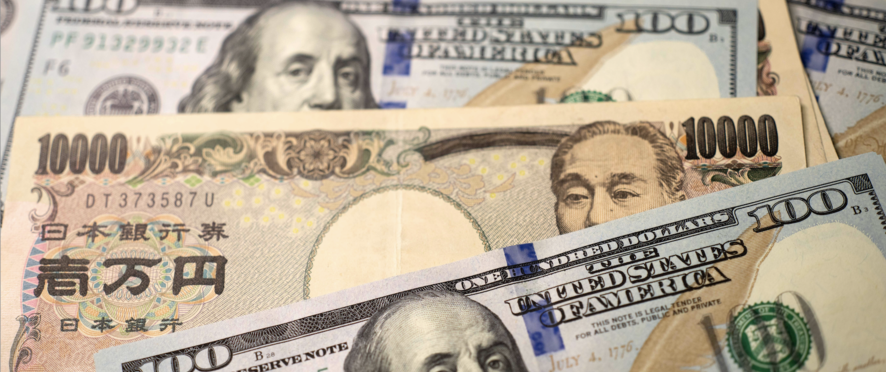Yen weakens as markets watch for potential action from Japan; dollar declines following data

The yen’s decline against major currencies raises speculation regarding Japan’s intervention strategy, coinciding with a slight dip in the dollar following softer-than-expected U.S. business activity data.
Yen Weakens Amid Speculation of Japanese Intervention
On Tuesday, the yen slid to multi-year lows against both the U.S. dollar and the euro, prompting investors to closely monitor Japan’s potential intervention ahead of this week’s Bank of Japan policy meeting.
The euro surged to 165.71 yen, marking its highest level since 2008, following reports indicating a robust expansion in business activity across the eurozone, driven by a strong rebound in the services sector.
At present, the common currency is up by 0.4% at 165.67 yen. Similarly, the dollar climbed to 154.88 against the yen, reaching a level not seen in 34 years and nearing the key threshold of 155, which market participants view as a potential trigger for Japanese intervention.
Despite earlier Japanese officials‘ restraint from intervening at 152, the yen’s slide towards the 155 level raises expectations for possible market intervention, especially given the Bank of Japan’s anticipated maintenance of its current stance.
Dollar Softens Following Soft U.S. Business Activity Data
The dollar slightly declined against the yen following data indicating that U.S. business activity weakened in April to a four-month low due to softer demand. S&P Global reported that its flash U.S. Composite PMI Output Index, monitoring both the manufacturing and services sectors, dropped to 50.9 from 52.1 in March, hovering just above the expansion threshold.
This decline contributed to the dollar index slipping by 0.4% to 105.66, reaching a two-week low of 105.61. Consequently, the euro advanced to a two-week high against the dollar at $1.0711 before retracing slightly to $1.0707, marking a 0.5% increase.
Following the release of German PMI data, the euro briefly reached a level equal to the previous day’s three-month high against the pound at 86.43 pence. However, it later retreated to trade at 85.95 pence, marking a 0.3% decline.
Investors in the United States anticipate that the Federal Reserve will be among the last major central banks to implement rate cuts. According to the CME’s FedWatch tool, the rate futures market is currently pricing in a 73% chance of the Fed’s first easing by September.
Just a few weeks ago, markets were anticipating June as the starting point for the Fed’s easing cycle, which stands in sharp contrast to the current expectations. This shift has contributed to the strengthening of the dollar.
Investors will get another opportunity to gauge the health of the U.S. economy this week, with the release of first-quarter gross domestic product (GDP) data on Thursday and the Personal Consumption Expenditures (PCE) index on Friday. The PCE index is particularly important as it is the Federal Reserve’s preferred measure of inflation.
Market analysts are expecting the headline Personal Consumption Expenditures (PCE) index to show a 0.3% rise in March, consistent with the previous month, and a year-on-year increase of 2.6%, up from 2.5% in February, based on a Reuters poll.
Risk Warning: CFDs are complex instruments and come with a high risk of losing money rapidly due to leverage. 76.87% of retail investor accounts lose money when trading CFDs with this provider. You should consider whether you understand how CFDs work and whether you can afford to take the high risk of losing your money.






